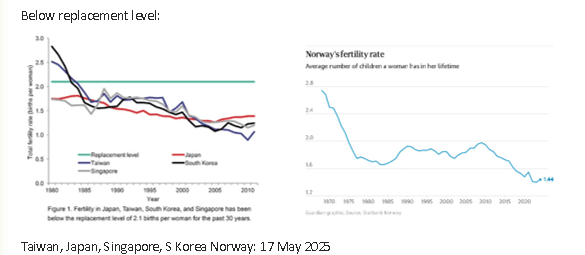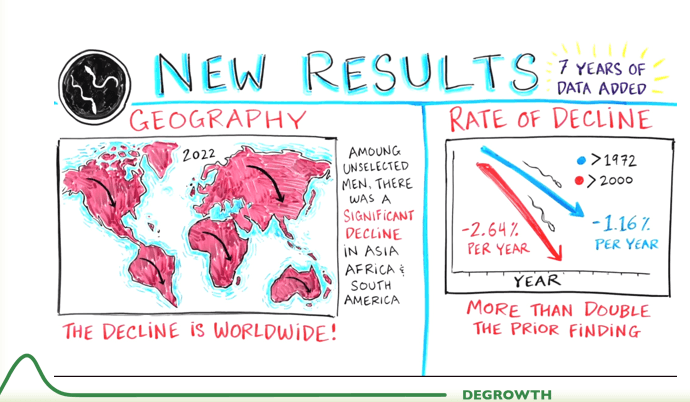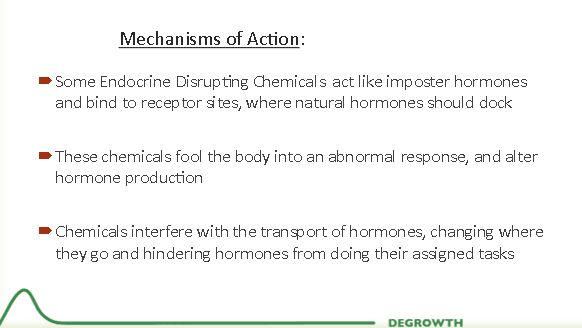Fertility trends globally are experiencing a significant decline, with the world fertility rate plummeting to its lowest levels in modern history, according to the United Nations Population Fund (UNFPA). There are challenges that arise as a direct result, including increasing pronatalism, compromised rights of future generations, and reproductive justice.

Determinants of decreasing fertility rates include access to education for girls and women, improved contraceptive use, economic constraints, shifts in societal values and expectations, and environmental factors. Exposure to environmental toxins, such as endocrine disrupting chemicals and pesticides can interfere with hormonal balance, disrupt ovulation, and impair sperm quality.
Prof. Shanna Swan, a renowned environmental and reproductive epidemiologist, has dedicated her career to studying the impact of environmental chemicals on reproductive health. Her work reveals alarming and increasing trends in declining sperm counts, diminished fertility, and birth defects.

Environmental toxicity can impact reproductive health in various ways, including:
1. Reduced Fertility: exposure to environmental toxins can reduce fertility in both men and women.
2. Pregnancy Complications: environmental toxins can increase the risk of pregnancy complications, such as miscarriage, preterm birth, and low birth weight.
3. Birth Defects: exposure to environmental toxins during pregnancy can increase the risk of birth defects and developmental disorders.
4. Reproductive Disorders: environmental toxins can contribute to the development of reproductive disorders, such as endometriosis and polycystic ovary syndrome.
Key Reproductive Epidemiology Findings:
- Decline in Sperm Count: A meta-analysis of data shows a 52% decline in mean sperm count, approximately 1% per year, over four decades. Further studies indicate a 2.64% decrease per year more recently.
- Endocrine Disruptors: chemicals like phthalates, found in plastics, cosmetics, and household items, disrupt hormonal balances, affecting reproductive development and function.
- Prenatal Exposure: in-utero exposure to endocrine disruptors can permanently affect
reproductive development, whereas adult exposure may have reversible effects.
- Reproductive Health Implications: increased risk of testicular cancer, miscarriage, menstrual problems, premature ovarian failure, and endometriosis.

The interconnected health of different species on the planet, and the damage being inflicted by
extreme ‘industrialisation’ of the environment, is resulting in devastating effects on dolphins, polar bears, alligators, frogs, birds, insects, and other species.
By understanding the relationship between exposure to toxins in the environment and reproductive health outcomes, reproductive epidemiologists are doing their best to raise the alarm about serious health threats, shifts in demographics, societal implications, and the changing prospects of the future - for humans and potentially for other life forms as well.
We are poisoning ourselves and the natural world. How is it that so little is being done to inform policies and interventions to reduce the impact of environmental toxicity on reproductive health?
References:
- World Fertility Rates: https://seasia.co/2025/07/17/world-fertility-rates-decline-due-to-life-pressures-un-finds
- Norway's Falling Birthrate: https://www.theguardian.com/world/2025/may/17/rethink-what-we-expect-from-parents-norway-grapple-with-falling-birthrate?CMP=share_btn_url
Notable publications by Prof. Shanna Swan:
- Temporal Trends in Sperm Count: A Systematic Review and Meta-Regression Analysis (2017): This study found a significant decline in sperm counts among men in Western countries over the past four decades, with a reported 52% decline in mean sperm count.
- Count Down: How Our Modern World Is Altering Male and Female Reproductive Development, Threatening Sperm Counts, and Imperiling the Future of the Human Race (2021): Prof. Swan's book discusses the alarming decline in sperm counts and attributes it to exposure to endocrine-disrupting chemicals.
- Environmental Phthalate Exposure in Relation to Reproductive Outcomes and Other Health Endpoints in Humans (2008): This study explores the relationship between phthalate exposure and reproductive health outcomes.
Image credits:
After Skool video featuring Prof. Shanna Swan, titled "A Global Fertility Crisis"
Kress (PPP 2025).

